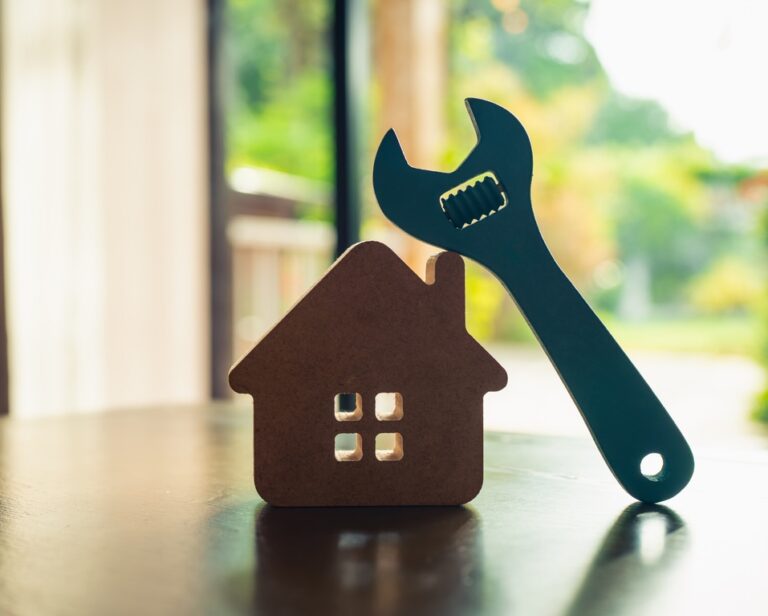Key Takeaways:
- A home equity agreement (HEA) gives you access to cash without monthly payments.
- A home equity line of credit (HELOC) is a revolving credit line you can borrow from on an as-needed basis.
- The best option depends on your financial goals — HEAs offer flexibility without taking on new debt, while HELOCs provide ongoing access to funds at potentially lower costs.
If you’re looking to tap into your home’s equity, you may be considering a home equity agreement (HEA) or home equity lines of credit (HELOC). Both allow you to convert your home value into cash, but they work in very different ways. This article will break down how a home equity agreement versus a HELOC works, so you can determine the best way to access your home equity.
What is a Home Equity Agreement (HEA)?
Before choosing between the two, it’s helpful to understand what a home equity agreement (HEA) is and how it compares to a HELOC. An HEA allows homeowners to access their equity without taking on monthly interest or debt payments.
Instead, homeowners receive a one-time, lump sum payment now in exchange for a share of their home’s future value. With an HEA, you continue to own and live in the home as usual. When the agreement ends, you’ll settle the HEA based on what your home is worth at that time.
There’s no monthly principal or interest payments attached to an HEA. At the end of the term, which is typically 10 to 30 years, you’ll settle the HEA agreement by either selling the home or buying out your provider.
What is a Home Equity Line of Credit (HELOC)?
A home equity line of credit (HELOC) is a line of credit that allows you to repeatedly borrow against your home equity. You can borrow up to your credit limit, and as those funds are repaid, your credit limit is replenished. A HELOC is a good option for borrowers who don’t know exactly how much they need to borrow
There are two main phases of a HELOC — the draw period and the repayment period. The draw period lasts 10 years, and during that time, you only have to make interest payments on the loan. The repayment period usually lasts 20 years, and your payments will increase as you begin to repay both principal and interest.
Your eligibility for a HELOC and the terms you receive depend on your credit score, income, debt-to-income (DTI) ratio, and total home equity. Most lenders allow you to borrow up to 85% of your home’s equity.
Key differences between an HEA and a HELOC
So, how does a home equity agreement work, and how does it compare to a HELOC? The following table breaks down some of the key differences:
| HEA | HELOC | |
| Monthly payments | No monthly payments | Interest-only payments during the draw period; principal and interest payments during repayment period. |
| Credit score needed | Minimum credit score of 500 | Minimum credit score of 680 |
| Settlement Terms | Homeowner either sells the home or buys out the investor once the term ends (usually 10-30 years). | Repayment period of 20 years |
| Use of funds | Can be used for any purpose | Can be used for any purpose |
| Qualification flexibility | Easier to qualify for since it’s based primarily on home equity and future value. | Stricter qualification requirements — lenders look at credit score, income, and DTI ratio. |
| Ownership structure | Homeowner retains ownership; investor places lien on home to secure their share of its future value. | Homeowner retains ownership; lender places lien on home for collateral. |
| Prepayment penalties | Depends on your provider and terms. (Unlock does not charge a prepayment penalty). | Depends on your lender and the agreement. |
Pros and cons of HEAs
Understanding the home equity agreement’s pros and cons can help you decide if this funding option is right for you.
Pros
An HEA can be a good option for homeowners who want to access cash without taking on additional monthly payments. An HEA is often viewed as one of the most flexible loan alternatives for homeowners who need cash without adding new monthly payments.
The eligibility requirements for an HEA also tend to be more lenient than a traditional loan. This makes them a good option for self-employed homeowners or those with less than perfect credit. And you can use the funds for virtually any purpose while maintaining full ownership and control of your property.
Cons
Because you’re sharing a portion of your home’s future value, the total amount you repay could be higher if your home appreciates significantly. It’s also a long-term agreement, typically lasting 10 to 30 years, which means you’ll need to settle the balance when the term ends or when you sell the home.
Pros and cons of HELOCs
Like any financing product, there are clear HELOC pros and cons to weigh before deciding if it’s the best way to access your home equity.
Pros
With a HELOC, you can borrow the money on an as-needed basis and only have to repay what you actually spend. HELOCs offer the flexibility of a credit card, but with much lower interest rates. Many homeowners opt for a HELOC when they aren’t sure exactly how much they need to borrow. And if you use the funds for a home renovation project, the interest may be tax-deductible.7
Cons
Since HELOCs are secured by your home, falling behind on your payments puts your property at risk of foreclosure. Monthly payments are required, and many HELOCs have variable interest rates, which means your costs could rise if rates increase.
Which one will work for you?
When evaluating a HELOC vs. home equity agreement, the best option depends on your financial goals. For example, an HEA may be best for homeowners who have significant equity but don’t want to take on an additional monthly payment.
It’s also a good option for borrowers who can’t qualify for a HELOC due to income or credit challenges. An HEA allows you to access cash without increasing your monthly expenses. If you need some financial breathing room and are comfortable sharing a portion of your home’s future value, an HEA may be right for you.
In comparison, a HELOC may be better suited for homeowners with strong credit and predictable income who can manage the monthly payments. HELOCs are ideal for ongoing or long-term projects, like home renovations or education costs, since you can borrow, repay the funds, and borrow again as needed.
HELOCs do require monthly payments and usually come with variable interest rates. However, they usually offer lower borrowing costs overall, making them a cost-effective choice for borrowers who prefer traditional forms of financing.
In short, if you want flexibility without monthly payments, an HEA may be the better fit. But if you want access to a revolving line of credit and lower overall costs, a HELOC could be the better choice.
Considering an HEA from Unlock?
For homeowners looking for a HELOC alternative, Unlock’s home equity agreement offers a way to access cash without monthly payments or interest. With Unlock, you’ll receive a lump sum payment based on your home’s value today. There are no monthly debt or interest payments, and you’ll maintain full ownership of your home.
Because Unlock’s qualification process is designed to be more flexible than traditional lenders, it can be a great fit for homeowners who want financial breathing room or who don’t meet the stricter requirements of a HELOC. To explore how much equity you could access and what your future settlement might look like, learn more about how an HEA from Unlock works.
Conclusion
Home equity agreements and HELOCs both allow you to turn your home equity into cash, but they’re designed for different types of borrowers. HEAs may be the better choice for borrowers who want to avoid monthly payments and a strict qualification process. But if you’re comfortable taking on monthly interest payments and want access to a line of credit, a HELOC might make more sense.



